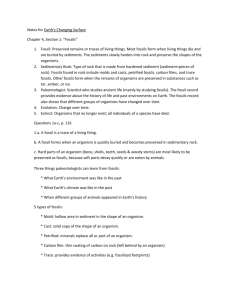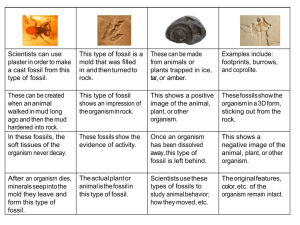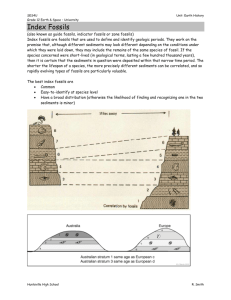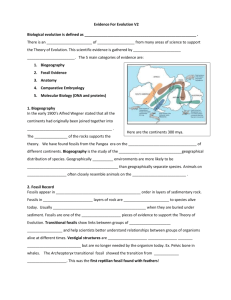Fossils Notes Ch. 8 Lesson 1
advertisement
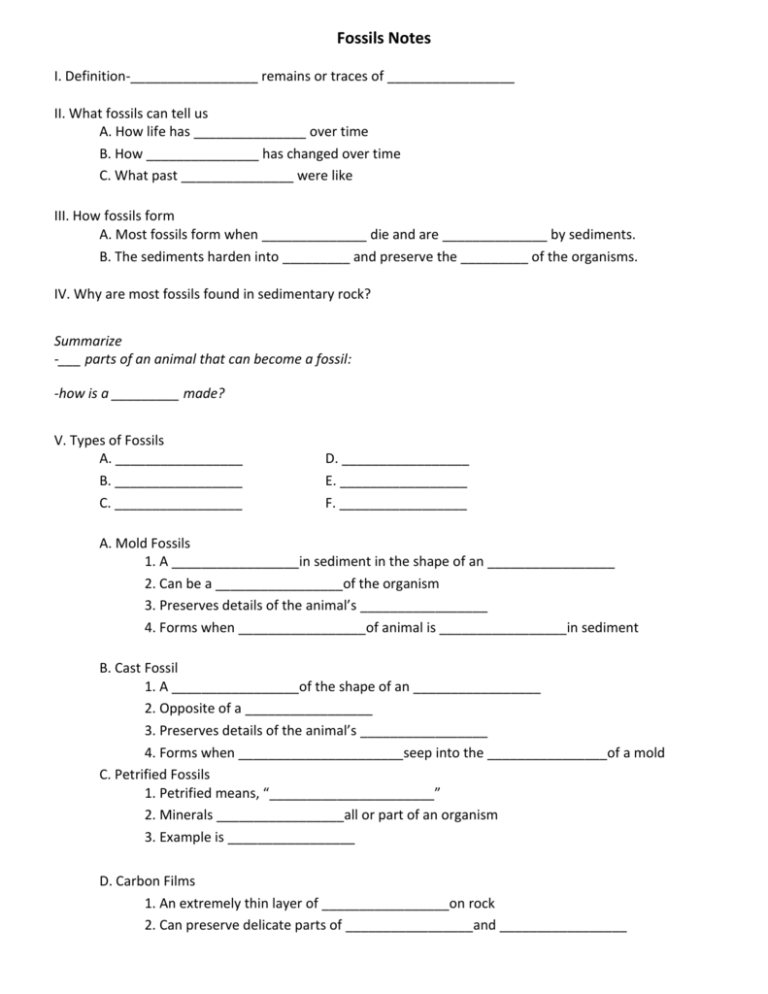
Fossils Notes I. Definition-_________________ remains or traces of _________________ II. What fossils can tell us A. How life has _______________ over time B. How _______________ has changed over time C. What past _______________ were like III. How fossils form A. Most fossils form when ______________ die and are ______________ by sediments. B. The sediments harden into _________ and preserve the _________ of the organisms. IV. Why are most fossils found in sedimentary rock? Summarize -___ parts of an animal that can become a fossil: -how is a _________ made? V. Types of Fossils A. _________________ B. _________________ C. _________________ D. _________________ E. _________________ F. _________________ A. Mold Fossils 1. A _________________in sediment in the shape of an _________________ 2. Can be a _________________of the organism 3. Preserves details of the animal’s _________________ 4. Forms when _________________of animal is _________________in sediment B. Cast Fossil 1. A _________________of the shape of an _________________ 2. Opposite of a _________________ 3. Preserves details of the animal’s _________________ 4. Forms when ______________________seep into the ________________of a mold C. Petrified Fossils 1. Petrified means, “______________________” 2. Minerals _________________all or part of an organism 3. Example is _________________ D. Carbon Films 1. An extremely thin layer of _________________on rock 2. Can preserve delicate parts of _________________and _________________ E. Trace Fossils 1. Provide evidence of the _________________of ancient organisms 2. Do you think the ground needs to be wet or dry for a trace fossil to form? ___ 3. Examples include _________________, ______________, or ______________ F. Preserved Remains 1. Preserves _________________of organisms with _________________change 2. Examples a. _________________in amber b. _________________ (and Otzi) in ice c. _________________in La Brea Tar Pits Think-Write-Share Which type of fossil do you think is _______? Why? VI. Change over time A. _________________ 1. scientists who study _________________ 2. collect fossils from _________________ rock 3. use these fossils to decide much about _________________ VII. Fossil Record A. Provides evidence about _________________of life B. Provides evidence of past _________________on Earth C. Shows that different groups of organisms have _________________ VIII. What the fossil record tells us A. _________________fossils are of _________________organisms B. _________________rocks contain more _________________organisms C. Earliest life was _________________ IX. _________________ A. An organism no longer _________________and will not live on Earth again B. Examples 1. Wooly Mammoth 2. Saber-tooth Cat 3. _________________ Summarize: Circle the letter of the correct answer. Which is NOT a factor that affects fossilization? A. B. C. D. body decay due to natural elements predators destroying the body hard or soft body parts age of the organism
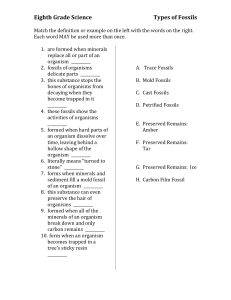
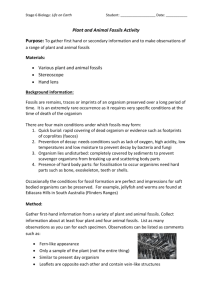


![F3-4 Study Guide for QUIZ [1/28/2016]](http://s3.studylib.net/store/data/006814899_1-56a576b1a51c0f876f28a8da0f15de89-300x300.png)

